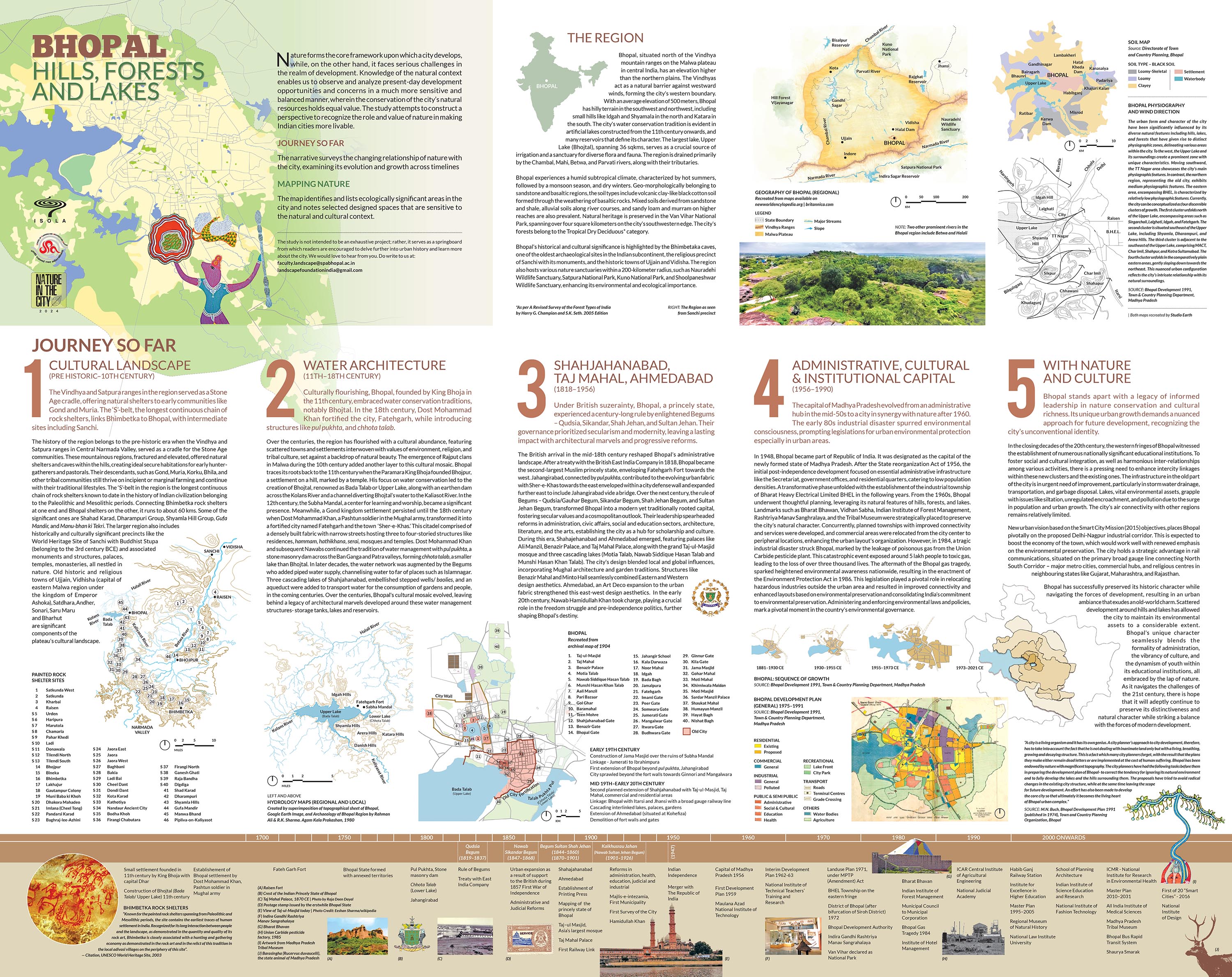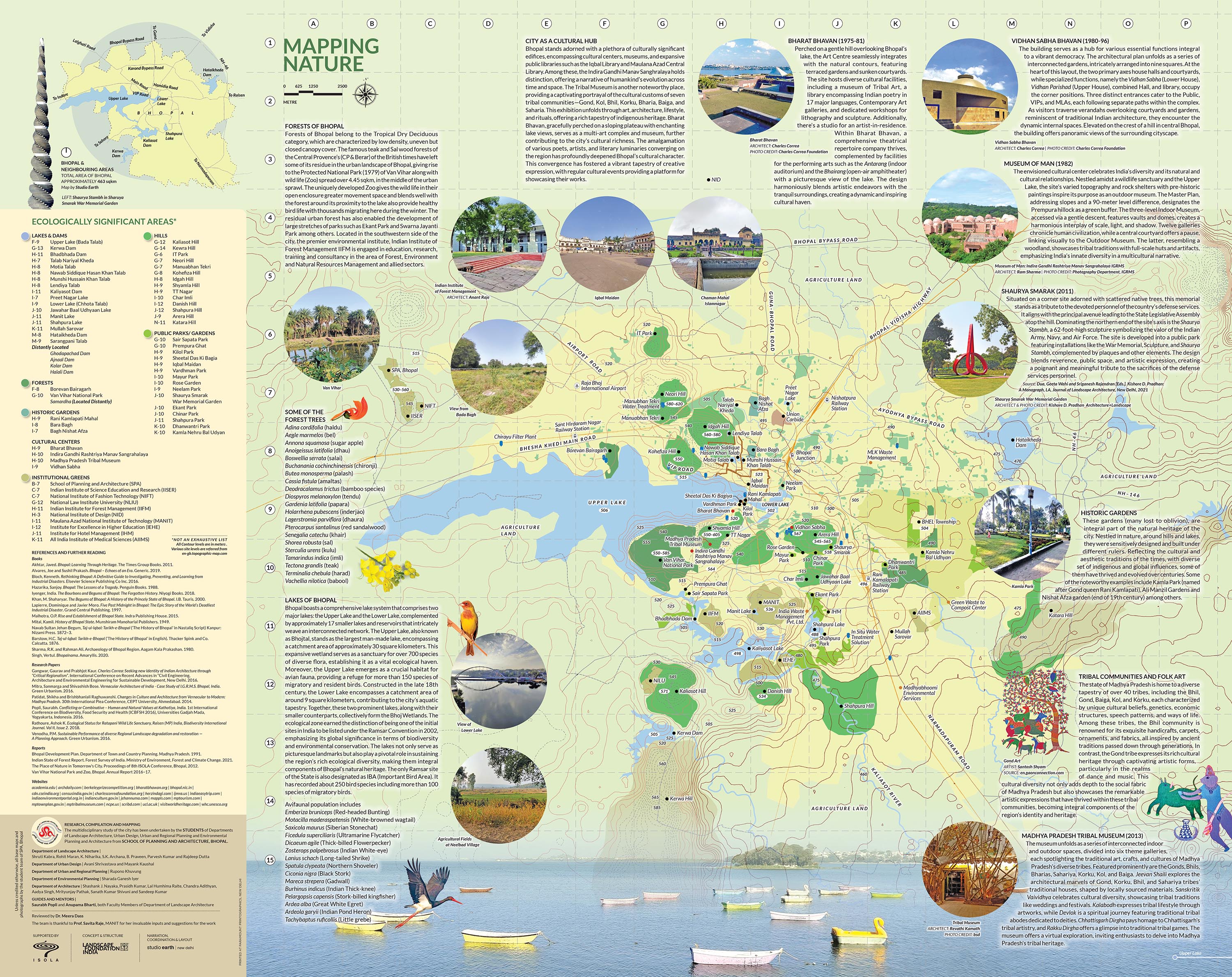| the region
THE CITY
P. K. Biswas
LA 77 |
|
| A multidisciplinary study “Bhopal: Hills, Forests & Lakes” endeavors to underscore the pressing necessity of defining the city and its historical narrative through an environmental lens. Through an exploration of its regional context, inception, evolution, and growth, the study seeks to unravel Bhopal’s intrinsic natural character, encompassing its land formations, water bodies, and vegetation. Furthermore, it highlights significant sites and locales that maintain a distinct relationship with nature within the city’s spatial design and planning framework. The project culminated in a map of Bhopal that was released at the 15th ISOLA Conference in Bhopal in February 2024.
|
|
 |
|
Bhopal lies in a cultural landscape with a rich history associated with its natural features and thriving culture belonging to many millennia, with rock paintings of Bhimbetka (in the north) depicting the Indian civilization belonging to the Paleolithic and Mesolithic periods and another World Heritage Site of Sanchi with Buddha Stupa on the northern side. Bhopal is called the City of Lakes due to its water conservation strategies initiated by its rulers with Bada Talab, Chhota Talab, and a host of other lakes present in the city. This tradition continued in later centuries and now in present times. The cosmopolitan character of the city with its modern outlook further flourished in its modern history under different regimes.
|
 |
|
|
|
|

|
|
|
|
|